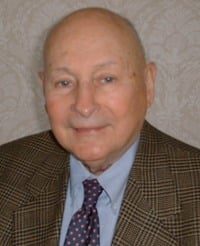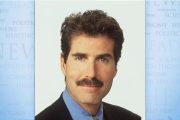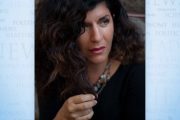
To this writer, and a good many of his friends on the Right, the best way to reform the public schools is to get the government out of the education business. Most of us believe that a government education system is incompatible with the principles and needs of a free society, in which educational freedom should prevail. John Taylor Gatto, after spending nearly 30 years teaching in public schools, has been one of the strongest critics of the whole concept of compulsory “schooling,” which he denounced in his devastating book, The Underground History of Public Education.
In his hard-hitting book, Dumbing Us Down, Gatto asserted that our present public schools confuse children because of the educators’ incoherent “progressive” curriculum. The student becomes indifferent and emotionally dependent, bereft of true literacy, and unable to develop an independent intellect. He is made fit for a life of no consequence. Indeed, Gatto found a very good description of the true intent of the public schools in a quote from an address that Woodrow Wilson gave in 1909 to the New York City High School Teachers Association:
We want one class of persons to have a liberal education and we want another class of persons, a very much larger class of necessity, to forgo the privileges of a liberal education and fit themselves to perform difficult manual tasks.
That point of view was even better expressed in 1981 by Harvard professor Anthony Oettinger, who told an audience of communications executives:
The present “traditional” concept of literacy has to do with the ability to read and write. But the real question that confronts us today is: How do we help citizens function well in their society? How can they acquire the skills necessary to solve their problems?
Do we, for example, really want to teach people to do a lot of sums or write in “a fine round hand” when they have a five-dollar hard-held calculator or a word processor to work with? Or, do we really have to have everybody literate — writing and reading in the traditional sense — when we have the means through our technology to achieve a new flowering of oral communication?
What is speech recognition and speech synthesis all about if it does not lead to ways of reducing the burden on the individual of the imposed notions of literacy that were a product of nineteenth century economics and technology?
Obviously, Professor Oettinger, Chairman of the Center for Information Policy Research at Harvard and a member of the Council on Foreign Relations, knows nothing about the history of literacy in the United States. The early Puritan settlers in New England stressed the need for literacy so that every child would be able to read the Bible. Indeed, the American Revolution was fought by people who could read the Bible as well as the Declaration of Independence and the Constitution. That great revolutionary document outlining the government of a free people was debated over for months before it was approved by the states. Indeed, high literacy was considered the cornerstone of our republic.
But for Oettinger to suggest that teaching a child to read is a burden of “imposed notions on literacy,” is really an insult to all of those parents who strive, sometimes at great expense, to make sure their children get a good education, which includes being taught to read and write.
Indeed, anyone who has seen the very sad documentary film on failed public education, Waiting for ‘Superman’, could not help but be greatly moved by the sight of those hundreds of parents who wanted a good education for their children, knowing that education was the only way to college and out of poverty, weeping in despair when their children did not win the lottery for the available places in the charter schools. The prospect of having to put their children in the dysfunctional public schools caused such dismay and unhappiness, that it makes us wonder why these schools are still permitted to exist. Schools that destroy lives ought not to exist. But the unions have the political power to keep them on taxpayer life-support indefinitely.
One thing is quite apparent: liberal reformers of public education don’t read Gatto’s books, nor do they read mine. For example, Michelle Rhee, the former superintendent of Washington D.C.’s public schools, who got into trouble fighting the teachers unions, has created a new nonprofit organization, Students First. She believes that the public schools need great teachers, and that the unions stand in the way. Rhee, who has a degree from Harvard’s Kennedy School of Government, is fully committed to creating as many charter schools as possible, which operate as public schools free of union influence.
Rhee got her liberal reform credentials from Teach For America, which was founded by Wendy Kopp whose undergraduate senior thesis at Princeton in 1989 outlined the need for an organization made up of idealistic university students determined to improve public education.
Under Ms. Kopp’s leadership, Teach For America was able to recruit nearly 33,000 participants willing to give at least two years to teaching in the public schools. So far, according to their website, they have reached “more than 3 million children nationwide during their two-year teaching commitments. They have sustained their commitment as alumni, working inside and outside the field of education to ensure educational excellence and equity for all children.”
But how successful has Teach For America been? The idea that great teachers will solve the problems of public education makes no sense if those teachers don’t have a good curriculum. For example, can a teacher be great and teach reading by the whole-language method? I doubt it. Nevertheless, there have been some success stories. Two TFA teachers, Dave Levin and Mike Feinberg, were successful in creating the KIPP (Knowledge is Power Program) charter schools. They had completed their Teach For America commitment and launched a program for fifth graders in a Houston inner-city public school which became the KIPP Academy.
Levin and Feinberg were lucky enough to find an angel to help them get started. Doris and Donald Fisher, co-founders of Gap Inc, were so impressed with what the two teachers were doing that they formed a partnership and in 2000 set up the KIPP Foundation with a grant of $15 million. Their aim was to spread the KIPP idea across the nation. By now there are 109 KIPP public schools in 20 states and D.C. with an enrollment of 32,000 students.
That’s a drop in the bucket considering that there are 45,000,000 students in the public schools. About two million children are being homeschooled, and 5,488,000 are in private schools. In 2008-2009 there were 4,601 charter schools with an enrollment of 1.4 million students. So the vast majority of American children are still trapped in the public schools, some of which are notorious dropout factories.
President Obama has been a great supporter of the charter school. On June 3, 2005, then-Senator Obama came to New York and helped a group of hedge fund Democrats — Whitney Tilson, Boykin Curry, and John Petry — launch Democrats for Educational Reform. This is their Statement of Principles:
A first-rate system of public education is the cornerstone of a prosperous, free and just society, yet millions of American children today — particularly low-income and children of color — are trapped in persistently failing schools that are part of deeply dysfunctional school systems. These systems, once viewed romantically as avenues of opportunity for all, have become captive to powerful, entrenched interests that too often put the demands of adults before the educational needs of children. This perverse hierarchy of priorities is political, and thus requires a political response.
Both political parties have failed to address the tragic decline of our system of public education, but it is the Democratic Party — our party — which must question how we allowed ourselves to drift so far from our mission. Fighting on behalf of our nation’s most vulnerable individuals is what our party is supposed to stand for.
Democrats for Education Reform aims to return the Democratic Party to its rightful place as a champion of children, first and foremost, in America’s public education systems.
The Board of Directors is made up mainly of billionaire hedge fund managers. The only way they can get around the power of the teachers’ unions is to create charter schools where the unions have no power. But that has created strains within the Democratic Party, but not enough to change any Democrat’s view of public education as a sacred institution which must be preserved above all else. A government education system is an absolute necessity for a socialist state. So there is no talk among the reformers of actually changing the curriculum. They believe that “great teachers” are the answer to their problems and that John Dewey was their true messiah.
Of course, this has created a rift between the reformers and the most powerful unions in America, the teachers’ unions, stalwarts of the Democrat Party. But when it comes to opposing the enemy — American right-wing conservatives — the reformers and the unions stand shoulder-to-shoulder in the ongoing battle. And that is why the reformers never read books advocating educational freedom or the restoration of our constitutional republic. And that is why the reformers will leave millions of American children out in the cold as they go through their tax-exempt motions of “reforming” public education.



